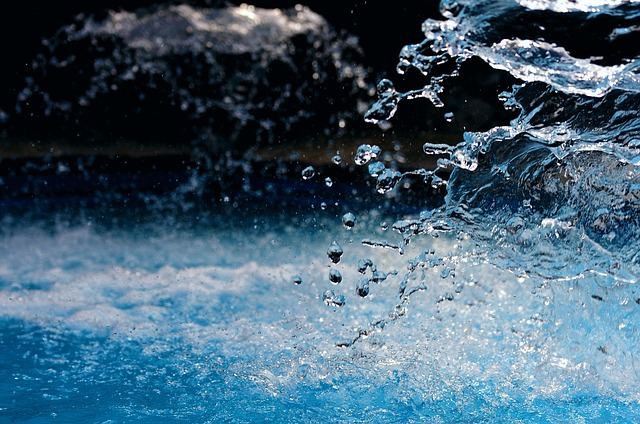
Swimming is one of the most enjoyable ways to relax, exercise, and connect with nature. But when it comes to swimming in natural water sources, safety always comes first. Dublin, with its stunning coastline, rivers, and lakes, offers plenty of options for open-water swimming. From my own personal experience, there are both fantastic spots for a refreshing dip and areas where caution is highly recommended. This guide will help understand the safety, health considerations, and best practices for swimming in Dublin’s water sources.
Let’s Understand Dublin’s Water Sources
Before diving into the specifics of swimming safety, it’s important to understand the types of water sources Dublin offers. Broadly, these can be divided into:
1. Rivers
Dublin has several rivers flowing through and around the city. The River Liffey is the most famous, running straight through the city center. While scenic, urban rivers like the Liffey can carry pollutants and may not always be suitable for swimming. Other rivers like the River Dodder, Tolka, and Camac also offer scenic spots, but water quality can vary depending on rainfall, upstream activities, and nearby urban areas.
2. Lakes and Reservoirs
Dublin also has several freshwater lakes, such as Blessington Lakes, Loughlinstown Reservoir, and Roundwood Reservoir nearby. These tend to be cleaner than rivers because they are less exposed to urban runoff. However, stagnant water can sometimes lead to bacterial growth, algae blooms, or other health hazards.
3. Coastal Areas
Dublin’s coastline stretches along the Irish Sea, offering sandy beaches, cliffs, and small coves. Popular spots include Sandymount Strand, Dollymount Strand, and Portmarnock Beach. Coastal waters are generally safe for swimming during summer months, but tidal changes, currents, and pollution after heavy rainfall can affect safety.
Water Quality in Dublin
Water quality is the most crucial factor when considering swimming. Local authorities and environmental agencies monitor water sources to ensure public safety.
1. Urban Rivers
Rivers like the Liffey are impacted by urban runoff, including oil, chemicals, and waste. While the city has improved wastewater management, occasional pollution events can occur, especially after heavy rainfall. Swimming in these rivers is generally not recommended unless officially designated as safe swimming areas.
2. Lakes and Reservoirs
Reservoirs supplying Dublin’s drinking water, such as the Vartry and Blessington reservoirs, maintain high water quality standards. However, swimming is often restricted in some reservoirs to protect water supply and prevent contamination. Other lakes used for recreation, like Blessington Lakes, may have designated swimming areas with periodic water testing.
3. Beaches and Coastal Waters
The Environmental Protection Agency (EPA) monitors water quality at Dublin’s beaches. During summer months, most popular beaches maintain high standards for bacteria levels, turbidity, and other pollutants. It’s always recommended to check official water quality reports before swimming.
Health Risks of Swimming in Unsafe Waters
Even seemingly clean water can pose risks if proper precautions aren’t taken. Some common health risks include:
1. Bacterial Infections
Rivers and lakes may contain bacteria such as E. coli, Salmonella, and Leptospira, especially after heavy rains. Contact with contaminated water can cause stomach illness, skin rashes, or eye infections.
2. Algae and Cyanobacteria
Some lakes and reservoirs experience algae blooms or cyanobacteria growth in warm months. These can release toxins harmful to humans and animals. Swimming in affected areas can cause skin irritation, respiratory issues, or digestive problems.
3. Strong Currents and Tides
Rivers and coastal areas may have strong currents, undertows, or tidal surges. Even experienced swimmers can get into trouble if unaware of local water conditions. Always check tide charts and local guidance before swimming in coastal areas.
4. Hidden Hazards
Natural water sources can hide sharp rocks, sudden drops, or submerged debris. Diving or jumping without inspecting the area first can lead to serious injuries.
Popular Swimming Spots in Dublin
Despite potential risks, there are safe and enjoyable locations for swimming in Dublin. Based on my overall experience, the following spots stand out:
1. Sandymount Strand
Sandymount Strand is a long, sandy beach near Dublin city. It’s ideal for casual swimming and wading. Tides are predictable, and lifeguards often patrol during the summer months. Water quality is usually high, making it one of the safest choices for city dwellers.
2. Portmarnock Beach
Portmarnock Beach is known for its golden sand dunes and gentle waves. It is popular among swimmers, surfers, and kite surfers. The beach is regularly tested for water quality, and the shallow, calm waters near the shore are great for beginners.
3. Blessington Lakes
Blessington Lakes is a beautiful freshwater lake system slightly outside Dublin. Certain areas allow swimming, and the water tends to be cleaner than rivers. Visitors should pay attention to designated swimming zones to ensure safety and avoid restricted areas.
4. Lough Dan and Lough Tay
Located in the Wicklow Mountains, these lakes offer stunning scenery and peaceful swimming spots. Swimming here is typically safe during summer months, but cold water temperatures and sudden depth changes require caution.
Safety Tips for Swimming in Dublin Water Sources
Even in safe areas, following simple safety guidelines can prevent accidents and health issues:
1. Check Water Quality
Before swimming, consult the EPA or local authority websites for water quality reports. Avoid swimming immediately after heavy rainfall, as runoff can increase pollution levels.
2. Swim in Designated Areas
Many lakes and beaches have marked swimming zones. Stick to these areas, as they are monitored for safety and water quality. Avoid private reservoirs or urban rivers unless they are officially approved for swimming.
3. Watch the Weather
Strong winds, sudden storms, and tidal changes can make swimming dangerous. Always check the local weather forecast and tides before heading out.
4. Avoid Swimming Alone
Even experienced swimmers should swim with a buddy. Natural water sources can be unpredictable, and having someone nearby increases safety.
5. Use Protective Gear
Wetsuits are recommended in colder water, as they prevent hypothermia. Swim shoes can also protect feet from sharp rocks or debris.
6. Enter Water Slowly
When swimming in unfamiliar areas, enter gradually. Sudden drops or cold water shocks can be hazardous.
7. Avoid Swimming After Heavy Rain
Rain can wash pollutants into rivers, lakes, and coastal areas. Wait at least 24-48 hours after heavy rainfall before swimming to reduce the risk of infection.
Environmental Considerations
Swimming responsibly in natural water sources also means protecting the environment:
- Do not leave trash on beaches or lakesides.
- Avoid using soaps or detergents in natural water sources.
- Respect local wildlife and vegetation.
- Follow all local regulations regarding swimming and access.
Emergency Procedures
Accidents can happen even in the safest areas. Knowing basic emergency procedures can save lives:
- Familiarize yourself with nearby lifeguard stations or emergency phones.
- Learn basic water rescue and CPR techniques.
- Keep a mobile phone or whistle nearby in case of emergencies.
- Report pollution or hazards to local authorities promptly.
Personal Experiences from Swimming in Dublin
From my own personal experience, swimming in Dublin’s water sources can be incredibly rewarding. The feeling of cold freshwater on a hot summer day, the scenic surroundings, and the opportunity to disconnect from city life are unmatched. However, I’ve learned that preparation is key. On several occasions, unexpected currents or sudden algae blooms reminded me why checking water quality and weather conditions is essential.
Swimming in Sandymount Strand with friends has been a regular highlight of summer weekends. The calm waters and open space make it ideal for relaxation. In contrast, exploring the Wicklow lakes introduced me to colder water temperatures and hidden depths that required a more cautious approach. Each experience reinforced the importance of respecting nature and staying informed.
Common Myths About Swimming in Dublin
Several myths circulate about swimming in Dublin waters. Let’s debunk some of the most common ones:
Myth 1: All Beaches Are Safe in Summer
While most popular beaches are safe, heavy rainfall or sewage overflow can temporarily reduce water quality. Always check official reports.
Myth 2: Rivers Are Cleaner Than Lakes
Urban rivers can actually be more polluted than lakes due to runoff, industrial waste, and urban debris. Lakes in less urbanized areas are often safer for swimming.
Myth 3: Cold Water Is Always Dangerous
Cold water can be invigorating and safe if approached gradually. Wetsuits and proper acclimatization can mitigate risks.
Regulations and Legal Aspects
Swimming in certain areas may be subject to legal restrictions:
- Private reservoirs and water treatment areas often prohibit swimming.
- Some coastal areas may require permits for organized events or competitions.
- Lifeguard-patrolled beaches have specific safety rules that must be followed.
Failure to follow these regulations can result in fines or more serious consequences.
Conclusion
Swimming in Dublin’s water sources can be safe and enjoyable, but it requires awareness, preparation, and respect for nature. From urban rivers to serene lakes and sandy beaches, each location offers unique experiences and potential risks. Always check water quality, follow designated swimming zones, respect local regulations, and never underestimate the power of natural water sources.
From my own personal experience, the best swims combine scenic beauty, careful planning, and responsible behavior. Whether enjoying a warm summer day at Sandymount Strand or exploring a quiet lake in Wicklow, Dublin’s waters can provide unforgettable experiences when approached safely.
By understanding the risks, following safety tips, and staying informed, swimming in Dublin can be a fun, refreshing, and healthy activity all year round.

